Friday, June 28, 2019
Thursday, June 27, 2019
Wednesday, June 26, 2019
Tuesday, June 25, 2019
5 factors to consider when it comes to ‘free’ malpractice insurance
When exploring the purchase of malpractice insurance, new dentists should understand that the policy isn’t just about the price, it’s a promise — and it can affect your entire career. You may often hear about the opportunity to get your first policy for “free,” and while it may sound appealing, it’s important to look past the price tag to uncover the value of what you’re actually getting. Here are five things to think about before factoring in the cost of your malpractice policy.
1. Length of policy
In many cases, free first-year malpractice policies are tied to a larger, “master” policy and are all required to have the same start and end date, regardless of your actual first day of practice.
For example, let’s say the free policy begins in May and expires May of the following year. You graduate dental school in June and start your first day of work in July. Essentially, your malpractice insurance has been active for two months, even though you haven’t started practicing, and will expire 10 months later, before you’ve even practiced for a full year.
That means you have to buy your second year of insurance earlier and may pay more during your first year in practice on this “free” policy. Look for a first-year policy that starts the same day you do. This way, you can get the first-year deals for your entire first year of practice and avoid paying second-year rates before you need to.
2. Amount of coverage
Oftentimes, free first-year malpractice policies have a standard set of limits that cannot be changed, such as $1 million per claim/$3 million aggregate. Policy limits dictate the maximum amount of money your insurance company will pay on your behalf. The first number reflects what the insurance company will pay per claim. The second number is the aggregate limit that the company will pay if there are multiple claims in the same policy period.
While limits of $1 million/$3 million may be suitable for some dentists, they may not be the best fit for everyone’s needs. The procedures you perform, practice location and overall scope of practice are just a few reasons why the decision regarding the amount of coverage in your malpractice policy should be in your control.
Rather than being added to a policy with limit restrictions, look for a policy and company that would allow you to select the coverage amount you want. For example, with MedPro’s first-year policy, you can choose any set of limits for no additional charge.
3. Policy type
Are you being offered Occurrence or Claims-made coverage? Each policy type has unique benefits, and it’s important to understand the difference so you can choose the one that best fits your career plans. A Claims-made policy may be less expensive to start but may cost you thousands of dollars down the road if you have to buy tail coverage.
4. Tail coverage
If the policy is Claims-made, you may need to purchase tail coverage if the policy is cancelled. Tail coverage can cost up to 160–290% of your undiscounted annual Claims-made premium. For example, if your undiscounted annual Claims-made premium was $2,500, your tail coverage could cost anywhere between $4,000 and $7,250. If you’ll be required to purchase tail coverage, you need to plan ahead and budget accordingly.
5. Carrier advantages
Make sure you find a carrier with a high A.M. Best financial strength rating and a proven record of winning claims. Don’t make your choice on price alone. Look for a financially strong company that will defend your practice, reputation and assets when the time comes.
As a new dentist, you’ll make a lot of important decisions on how to protect your future. MedPro Group can help make your malpractice insurance easy and affordable. Our A++ A.M. Best rating, 95% national dental trial win rate and pure consent to settle provision shows that you’ll be well-protected. With your exclusive ASDA discount, your first policy with MedPro Group could be as low as $50 for your entire first year in practice.
Whether you’re a student, resident or new graduate, congratulations on being another step closer to accomplishing your dreams. We’re excited to see what the next chapter holds and are always here if you have any questions along the way. Call 800-4MEDPRO ext. 119660 or visit us online to learn more.
~MedPro Group
A.M. Best rating as of 7/11/2018. All data is MedPro Group data; claims data range is 2013-2017. Must qualify for new-to-practice and ASDA discount for $50 policy. Other credits and debits may apply. MedPro Group is the marketing name used to refer to the insurance operations of The Medical Protective Company, Princeton Insurance Company, PLICO, Inc. and MedPro RRG Risk Retention Group. All insurance products are administered by MedPro Group and underwritten by these and other Berkshire Hathaway affiliates, including National Fire & Marine Insurance Company. Product availability is based upon business and/or regulatory approval and may differ between companies. ©2019 MedPro Group Inc. All Rights Reserved.
Monday, June 24, 2019
Friday, June 21, 2019
Thursday, June 20, 2019
Wednesday, June 19, 2019
Juneteenth: A celebration of freedom
Growing up, I spent most summers with my grandparents on the east side of Fort Worth, Texas, which meant playing in the sprinklers, trips to the military commissary and, of course, plenty of junk food. On Mondays, my cousins and I would get dropped off at PopPop and Granny’s, and we’d stay until Friday evening, which was when they hosted some of their closest friends for game night. When my mother worked late, I would stay a while longer, visiting with each sophisticated, silver-haired guest as they walked through the front door. One woman in particular, Ms. Opal Lee, was my favorite. Ms. Lee always walked into the house on a mission (usually more pressing than winning another round of cards). In June, her mission was to educate us all about the significance of Juneteenth.
On Juneteenth, also referred to as Emancipation Day, many African Americans celebrate their “independence day,” recognizing when Texas slaves were informed they were free. The Emancipation Proclamation took effect two years prior on Jan. 1, 1863, but in many states — primarily border states and those not liberated by Union troops — slaves were still not freed. Granger’s order, along with the ratification of the 13th Amendment later in 1865, reflected a turning point in the lives of black Americans nationwide.
In the first celebrations of the holiday, African Americans saw it as an opportunity to reunite lost families and galvanize racial equality. Black people from all over the state of Texas gathered in their finest clothes to observe Juneteenth through readings of the Emancipation Proclamation, religious sermons, preparation of specialty dishes, as well as playing games. Eventually, when the festivities of Juneteenth began to cross states, participants were forbidden from the usage of public space for the gatherings, in acts of discrimination. So instead, they gathered near lakes and rivers until they accrued enough capital to pay for their own places to celebrate, one example being Emancipation Park in Houston.
In my hometown, Ms. Lee’s commitment to educating and elevating black culture goes back generations. She would canvass the neighborhood informing families about the importance of celebrating Juneteenth. Her passion for this inspired her at 90 years old to start her “Walk to D.C.” campaign, where she journeyed from Fort Worth to Washington, D.C., to advocate for making Juneteenth a national holiday. Years have passed since that momentous occasion, and still, Ms. Lee educates communities about the holiday. She is driven by the desire to pass the torch to the next generation and provoke young people to take action.
~Alexandria Evans, Texas A&M ’22
Tuesday, June 18, 2019
Welcome, Class of 2019
The American Dental Association and our 163,000 members are proud to welcome the class of 2019 to the profession. We’re here to help you take the next step in your career journey with resources, tips and tools specifically for recent graduates.
Update your ADA Find-a-Dentist profile so potential new patients can find you wherever you land. Digitize your records for credentialing and learn about your student loan refinancing options to get a step up on paying off your debt. Get one-on-one support for your dental benefits issues through the ADA Third Party Payer Concierge .
.
And let us know your future plans by updating your profile at ADA.org/MyADA. It’s your path. We’re here for your journey.
~American Dental Association
 Can how patients describe their pain help you determine the underlying cause? Researchers used two sensitivity tests on 228 patients with an acute toothache and also asked them to choose from a list of 22 pain descriptors. They found that the words the patients chose to describe their pain pointed to a diagnosis.
Can how patients describe their pain help you determine the underlying cause? Researchers used two sensitivity tests on 228 patients with an acute toothache and also asked them to choose from a list of 22 pain descriptors. They found that the words the patients chose to describe their pain pointed to a diagnosis. Women exposed to triclosan may be more likely to develop osteoporosis, according to new research published on June 25. The antibacterial chemical found in toothpastes and other oral care products has been previously linked to hormone disruption, colon cancer, and antimicrobial resistance.
Women exposed to triclosan may be more likely to develop osteoporosis, according to new research published on June 25. The antibacterial chemical found in toothpastes and other oral care products has been previously linked to hormone disruption, colon cancer, and antimicrobial resistance.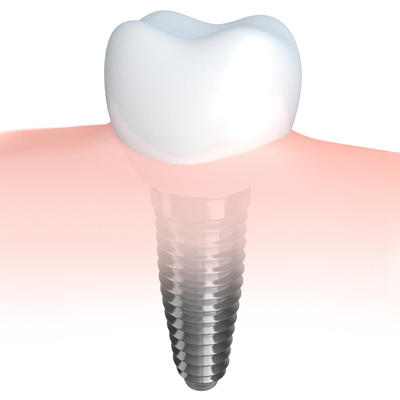 The U.S. Food and Drug Administration (FDA) released new data that include approximately 117,200 reports of serious injuries associated with dental implants. The vast majority of these injuries were due to problems with osseointegration.
The U.S. Food and Drug Administration (FDA) released new data that include approximately 117,200 reports of serious injuries associated with dental implants. The vast majority of these injuries were due to problems with osseointegration. Considerable debate has surrounded taxes on sugary beverages and their effectiveness in reducing consumption, but that debate may be settled by a new review. Researchers analyzed the effects of these taxes and found they were successful in reducing consumption.
Considerable debate has surrounded taxes on sugary beverages and their effectiveness in reducing consumption, but that debate may be settled by a new review. Researchers analyzed the effects of these taxes and found they were successful in reducing consumption. Human papillomavirus (HPV) vaccination programs can substantially reduce the number of infections in girls and women, researchers report in a new study published in Lancet. Their analysis suggests vaccination programs are working.
Human papillomavirus (HPV) vaccination programs can substantially reduce the number of infections in girls and women, researchers report in a new study published in Lancet. Their analysis suggests vaccination programs are working.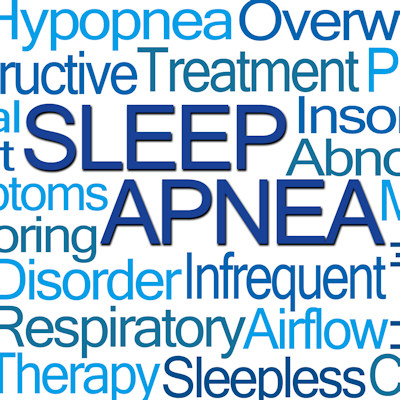 A new study offers another reason to screen your patients for obstructive sleep apnea (OSA). Patients with severe OSA have a greater risk for cardiovascular disease, according to research presented at this week's Society of Nuclear Medicine and Molecular Imaging annual meeting.
A new study offers another reason to screen your patients for obstructive sleep apnea (OSA). Patients with severe OSA have a greater risk for cardiovascular disease, according to research presented at this week's Society of Nuclear Medicine and Molecular Imaging annual meeting. Has your practice received a phone call from a U.S. Drug Enforcement Administration (DEA) agent demanding payment? Has your energy company called requesting money and information? To help make practices aware of these scams, the California Dental Association put together a guide to help your practice handle these scams.
Has your practice received a phone call from a U.S. Drug Enforcement Administration (DEA) agent demanding payment? Has your energy company called requesting money and information? To help make practices aware of these scams, the California Dental Association put together a guide to help your practice handle these scams. What effects do tea beverages have on your patients' teeth? Researchers tested 460 tea beverages and found that most increase the risk of enamel erosion, according to results presented at the 2019 International Association for Dental Research meeting.
What effects do tea beverages have on your patients' teeth? Researchers tested 460 tea beverages and found that most increase the risk of enamel erosion, according to results presented at the 2019 International Association for Dental Research meeting. An insurance company studied internal data and found that general dentists reduced the number of days of supplied opioids prescribed by 9% over a three-year period, according to research presented at the 2019 International Association for Dental Research meeting.
An insurance company studied internal data and found that general dentists reduced the number of days of supplied opioids prescribed by 9% over a three-year period, according to research presented at the 2019 International Association for Dental Research meeting. Have you looked at your stockroom and seen supplies piling up? Are all the overtime hours your team members file legitimate? Practice management consultant Teresa Duncan has been asked how to deal with these two issues often, and she shares some practical advice to help your practice grow.
Have you looked at your stockroom and seen supplies piling up? Are all the overtime hours your team members file legitimate? Practice management consultant Teresa Duncan has been asked how to deal with these two issues often, and she shares some practical advice to help your practice grow. If you'd rather text patients than meet them in person, you might be a millennial. Dental students are far more likely to prefer texting peers and patients, according to research presented at the 2019 International Association for Dental Research meeting in Vancouver, British Columbia.
If you'd rather text patients than meet them in person, you might be a millennial. Dental students are far more likely to prefer texting peers and patients, according to research presented at the 2019 International Association for Dental Research meeting in Vancouver, British Columbia. Most dentists don't believe it, but they can increase production by 30% to 50% in three years. Dentists are often limited by their current approach to the business of dentistry. By identifying and rooting out system deficiencies, any practice can grow dramatically without demanding more time from the dentist and team, Dr. Roger P. Levin writes in his latest Practice Success tip.
Most dentists don't believe it, but they can increase production by 30% to 50% in three years. Dentists are often limited by their current approach to the business of dentistry. By identifying and rooting out system deficiencies, any practice can grow dramatically without demanding more time from the dentist and team, Dr. Roger P. Levin writes in his latest Practice Success tip. One in five attendees at a major dental research conference experienced some form of sexual harassment at recent meetings, according to survey results presented at the 2019 International Association for Dental Research meeting in Vancouver, British Columbia.
One in five attendees at a major dental research conference experienced some form of sexual harassment at recent meetings, according to survey results presented at the 2019 International Association for Dental Research meeting in Vancouver, British Columbia. The U.S. Department of Health and Human Services published a rule on June 20 that expands the use of health reimbursement arrangements (HRAs). The new policy creates a special type of HRA that employees can use for dental premiums and other qualified medical expenses.
The U.S. Department of Health and Human Services published a rule on June 20 that expands the use of health reimbursement arrangements (HRAs). The new policy creates a special type of HRA that employees can use for dental premiums and other qualified medical expenses. The American Academy of Pediatric Dentistry and American Academy of Pediatrics have updated their sedation guidelines for the first time in three years. The new guidelines call for two trained personnel to be present when providing deep sedation or general anesthesia to children.
The American Academy of Pediatric Dentistry and American Academy of Pediatrics have updated their sedation guidelines for the first time in three years. The new guidelines call for two trained personnel to be present when providing deep sedation or general anesthesia to children. Do restoratives last when placed in frail older adults who live in long-term care facilities? In promising news for these residents, they do, according to a presentation on June 20 at the 2019 International Association for Dental Research meeting in Vancouver, British Columbia.
Do restoratives last when placed in frail older adults who live in long-term care facilities? In promising news for these residents, they do, according to a presentation on June 20 at the 2019 International Association for Dental Research meeting in Vancouver, British Columbia.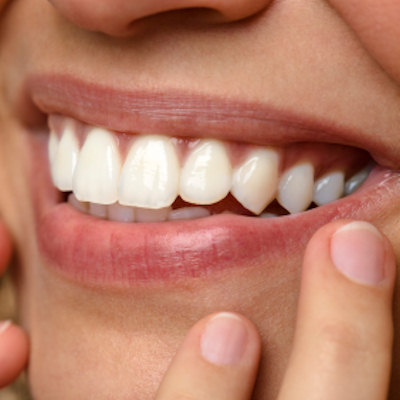 Oil pulling has been praised as a natural way to boost oral health, but does the science support the hype? The technique may rival modern medicine in at least some cases, according to research presented at the 2019 International Association for Dental Research meeting.
Oil pulling has been praised as a natural way to boost oral health, but does the science support the hype? The technique may rival modern medicine in at least some cases, according to research presented at the 2019 International Association for Dental Research meeting.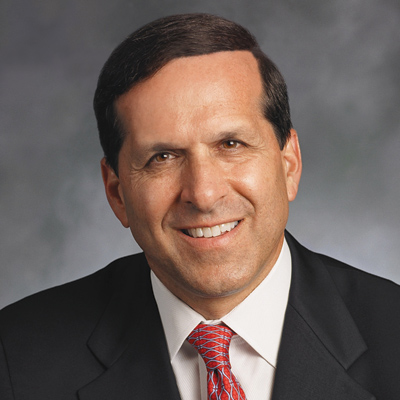 No one can predict the future with 100% certainty, but certain trends can help provide a road map. Dr. Roger P. Levin examines five of these trends for dentistry, including the growth of dental support organizations, declining reimbursement, and staffing issues.
No one can predict the future with 100% certainty, but certain trends can help provide a road map. Dr. Roger P. Levin examines five of these trends for dentistry, including the growth of dental support organizations, declining reimbursement, and staffing issues. The sugar industry created a public relations campaign and used dietitians to help spread pro-sugar messages to dental professionals in the 1970s, according to research presented on June 19 at the 2019 International Association for Dental Research conference in Vancouver, British Columbia.
The sugar industry created a public relations campaign and used dietitians to help spread pro-sugar messages to dental professionals in the 1970s, according to research presented on June 19 at the 2019 International Association for Dental Research conference in Vancouver, British Columbia. Poor oral health is associated with an increased risk of the most common form of liver cancer, according to a new study published online June 17. Researchers analyzed data from nearly 470,000 patients and found that poor oral health was linked to an increased risk of hepatocellular carcinoma.
Poor oral health is associated with an increased risk of the most common form of liver cancer, according to a new study published online June 17. Researchers analyzed data from nearly 470,000 patients and found that poor oral health was linked to an increased risk of hepatocellular carcinoma. Just like every sports team, each dental practice is different, with unique strengths and weaknesses. There isn't a set of plays that will work the same for every team. But what the best teams understand, according to Curtis Marshall of Dental Intelligence, is that focusing on incremental achievement is the way to progress to bigger goals.
Just like every sports team, each dental practice is different, with unique strengths and weaknesses. There isn't a set of plays that will work the same for every team. But what the best teams understand, according to Curtis Marshall of Dental Intelligence, is that focusing on incremental achievement is the way to progress to bigger goals.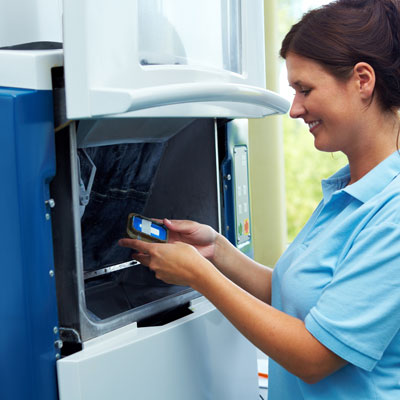 Should you trust the fitting of a monolithic zirconia crown to a CAD/CAM or milling process? Researchers put the two methods to the test to find out which produced a better fit. What they found might change how you complete the restorations for your patients.
Should you trust the fitting of a monolithic zirconia crown to a CAD/CAM or milling process? Researchers put the two methods to the test to find out which produced a better fit. What they found might change how you complete the restorations for your patients. Filing for reimbursement from medical insurers for dental procedures requires specific information and attention to detail. Dental practice consultant Christine Taxin explains what your practice needs to include to file for this greater reimbursement in the second of a two-part series.
Filing for reimbursement from medical insurers for dental procedures requires specific information and attention to detail. Dental practice consultant Christine Taxin explains what your practice needs to include to file for this greater reimbursement in the second of a two-part series. Young dentists testified before members of the U.S. House of Representatives on June 12 to urge lawmakers to consider strategies for student debt relief.
Young dentists testified before members of the U.S. House of Representatives on June 12 to urge lawmakers to consider strategies for student debt relief.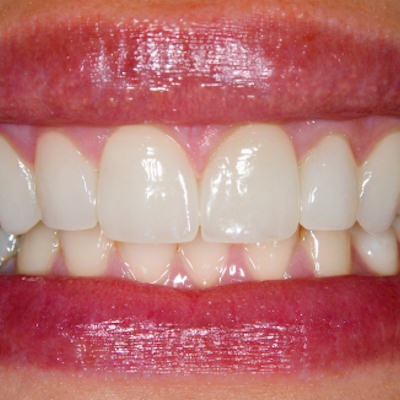 Veneers made with glass ceramic may be more durable than those composed of indirect resin. These findings come from a new study that evaluated the long-term survival rate of restorations placed on maxillary anterior teeth.
Veneers made with glass ceramic may be more durable than those composed of indirect resin. These findings come from a new study that evaluated the long-term survival rate of restorations placed on maxillary anterior teeth.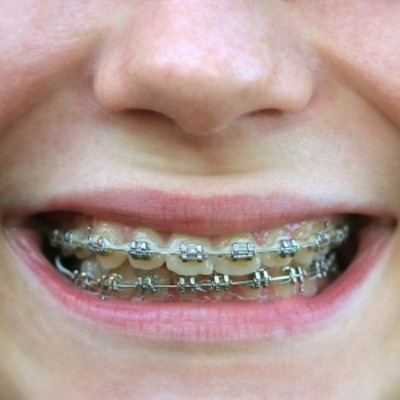 One reason cited for starting orthodontic treatment is the belief that it will help patients feel more positive about themselves later in life. Researchers surveyed more than 440 30-year-olds and found that other factors may play a larger role in patients' long-term outlook.
One reason cited for starting orthodontic treatment is the belief that it will help patients feel more positive about themselves later in life. Researchers surveyed more than 440 30-year-olds and found that other factors may play a larger role in patients' long-term outlook. What qualities make for a safety-focused dental practice? Nearly 400 hygienists shared their thoughts in a recently published study. Both the number of hours worked and number of patients seen per day had a big impact on perceived patient safety.
What qualities make for a safety-focused dental practice? Nearly 400 hygienists shared their thoughts in a recently published study. Both the number of hours worked and number of patients seen per day had a big impact on perceived patient safety. A California dentist has been charged with insurance fraud for submitting reimbursement claims to private insurance companies for dental work that allegedly was never performed. The dentist submitted claims for nearly $600,000 covering 623 root canals in 75 patients, according to state authorities.
A California dentist has been charged with insurance fraud for submitting reimbursement claims to private insurance companies for dental work that allegedly was never performed. The dentist submitted claims for nearly $600,000 covering 623 root canals in 75 patients, according to state authorities. Researchers simulated 10 years of brushing with manual toothbrushes to find out if the bristle configuration put users at increased risk of dentin abrasion and developing noncarious cervical lesions. What they found out might change what you recommend to your patients.
Researchers simulated 10 years of brushing with manual toothbrushes to find out if the bristle configuration put users at increased risk of dentin abrasion and developing noncarious cervical lesions. What they found out might change what you recommend to your patients.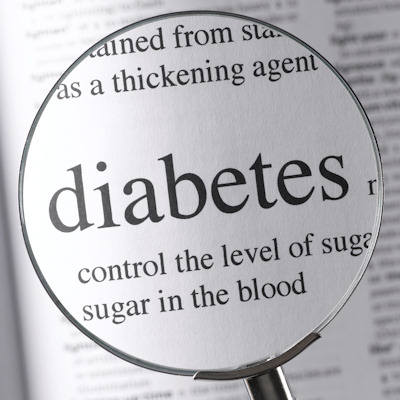 Periodontal health may be related to everything from prediabetes to puberty. Researchers who evaluated some of these connections presented their findings at the American Diabetes Association 2019 annual meeting in San Francisco.
Periodontal health may be related to everything from prediabetes to puberty. Researchers who evaluated some of these connections presented their findings at the American Diabetes Association 2019 annual meeting in San Francisco.